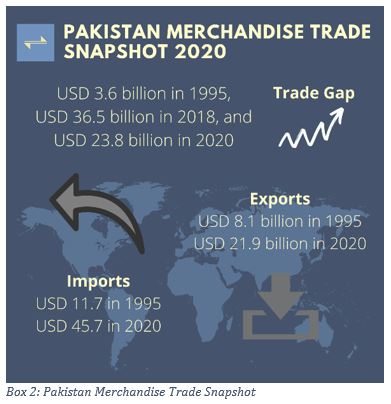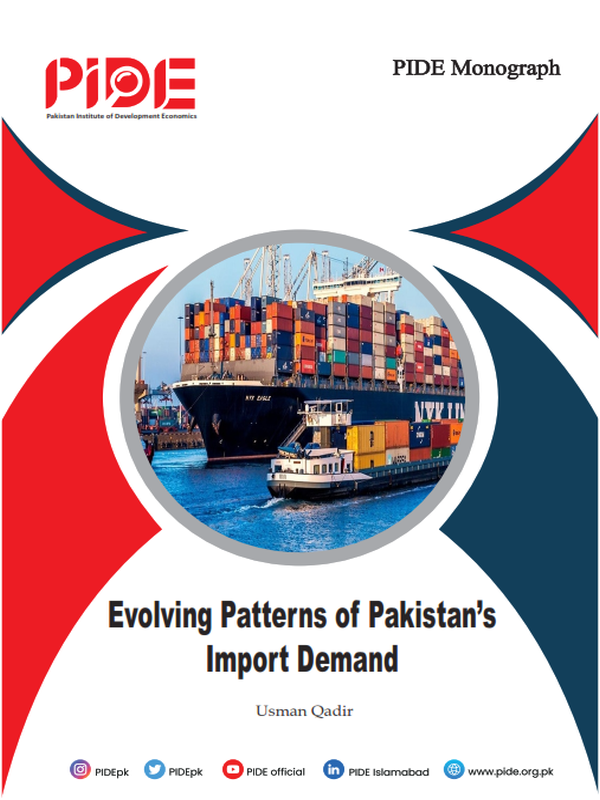
Pakistan Institute of Development Economics
- Home
Our Portals
MenuMenuMenuMenuMenuMenuMenu - ResearchMenuMenuMenuMenuMenuMenuMenu
- Discourse
- The PDR
- Our Researchers
- Academics
- Degree Verification
- Thesis Portal
- Our Portals
Evolving Patterns of Pakistan’s Import Demand
1. Introduction
The notion that positive trade gaps, or trade surpluses (with exports exceeding imports) are good for the domestic economy is a concept that has its roots in mercantilist thinking[1] of 16th century Europe. Global trading patterns have undergone a shift since then, MNCs and global production networks have come to the fore, and services now accounting for majority of developed country exports, and mercantilist view are no longer in vogue. Despite this trend, negative trade gaps, or trade deficits remain a matter of concern for developing countries such as Pakistan. However, the reasoning behind this view is related to the strain placed on the current account of the domestic economy.
| In a nutshell: Mercantilism is “economic nationalism for the purpose of building a wealthy and powerful state”. What is it about?
|
Box 1: What is Mercantilism About
In 2020, Pakistan’s trade gap amounted to USD 23.8 billion[2] , having grown from USD 3.6 billion in 1995 . Value of exports has increased from USD 8.1 billion in 1995 to USD 21.9 billion in 2020, while imports were valued at USD 11.7 billion in 1995,[3] and USD 45.7 billion in 2020. Imports place a strain on the national economy in terms of increased demand for foreign exchange required to finance them, reserves which could otherwise be utilized for enhancing productivity and competitiveness of the domestic economy.

Against this backdrop and given the weak macroeconomic condition of the economy, it is necessary to understand what is driving the rise in imports so appropriate policy measures can be implemented to reduce them. The rest of this research brief is organized as follows: Section 2 details trends and growth in overall exports and imports from 1995 to 2020, while Section 3 highlights the product categories driving the surge in imports. Section 4 sheds light on the key sources of imports, while section 5 concludes the discussion.
__________
[1] Laura LaHaye, “Mercantilism,” in David R. Henderson, ed., The Concise Encyclopedia of Economics, Liberty Fund, 2008.
Britannica, T. Editors of Encyclopaedia (2020, May 13). Mercantilism. Encyclopedia Britannica. https://www.britannica.com/topic/mercantilism
[2] Author’s calculations based on data taken from UN COMTRADE online database
[3] Economic activity on account of the COVID-19 pandemic and subsequent lockdowns slowed down in 2019, reflected in the virtually static trend (for exports) and negative trend (for imports and trade balance). The overall result was an improvement in the trade gap, though exports have been negatively affected as well.
For Full Text Download PDF



